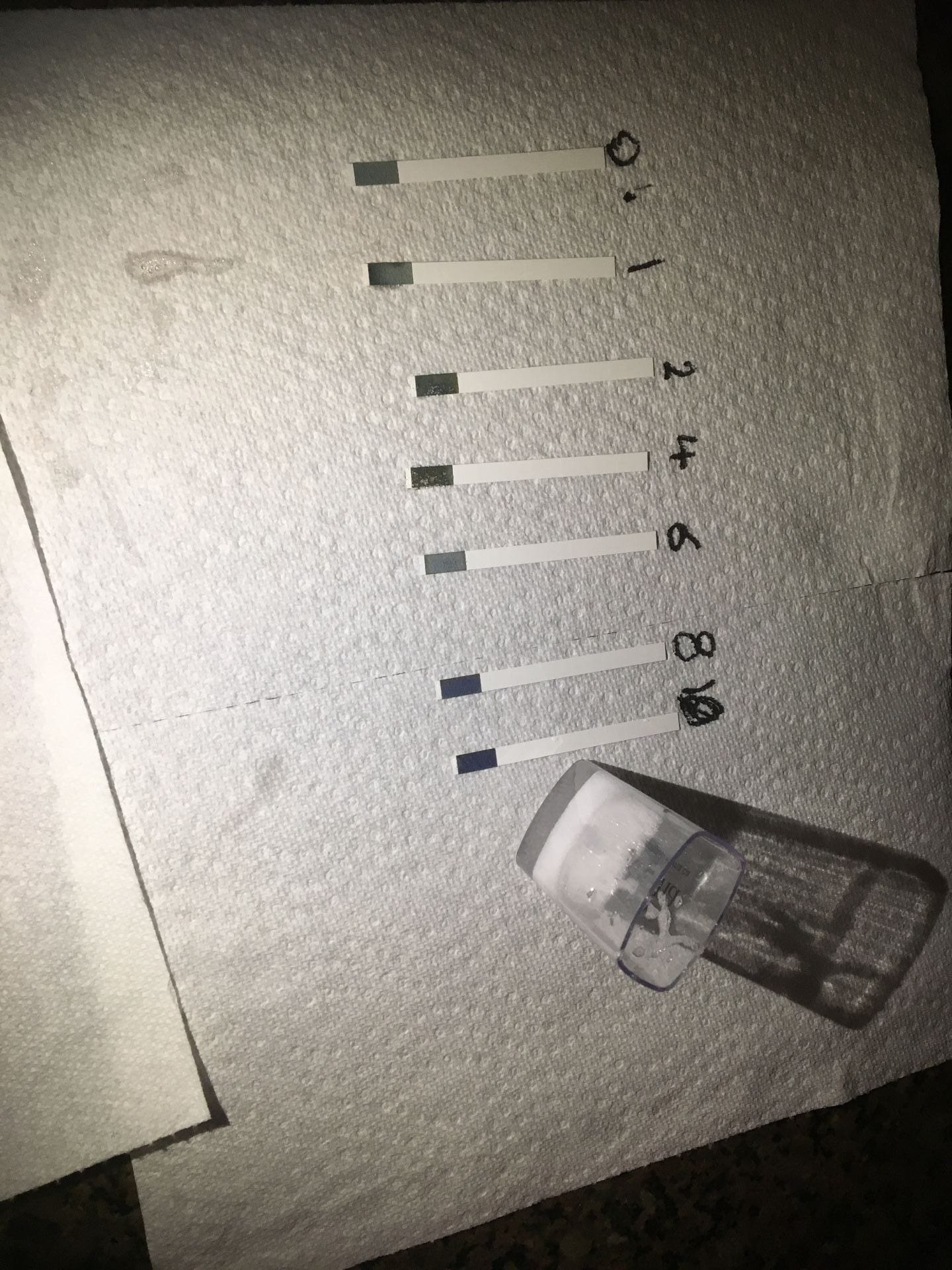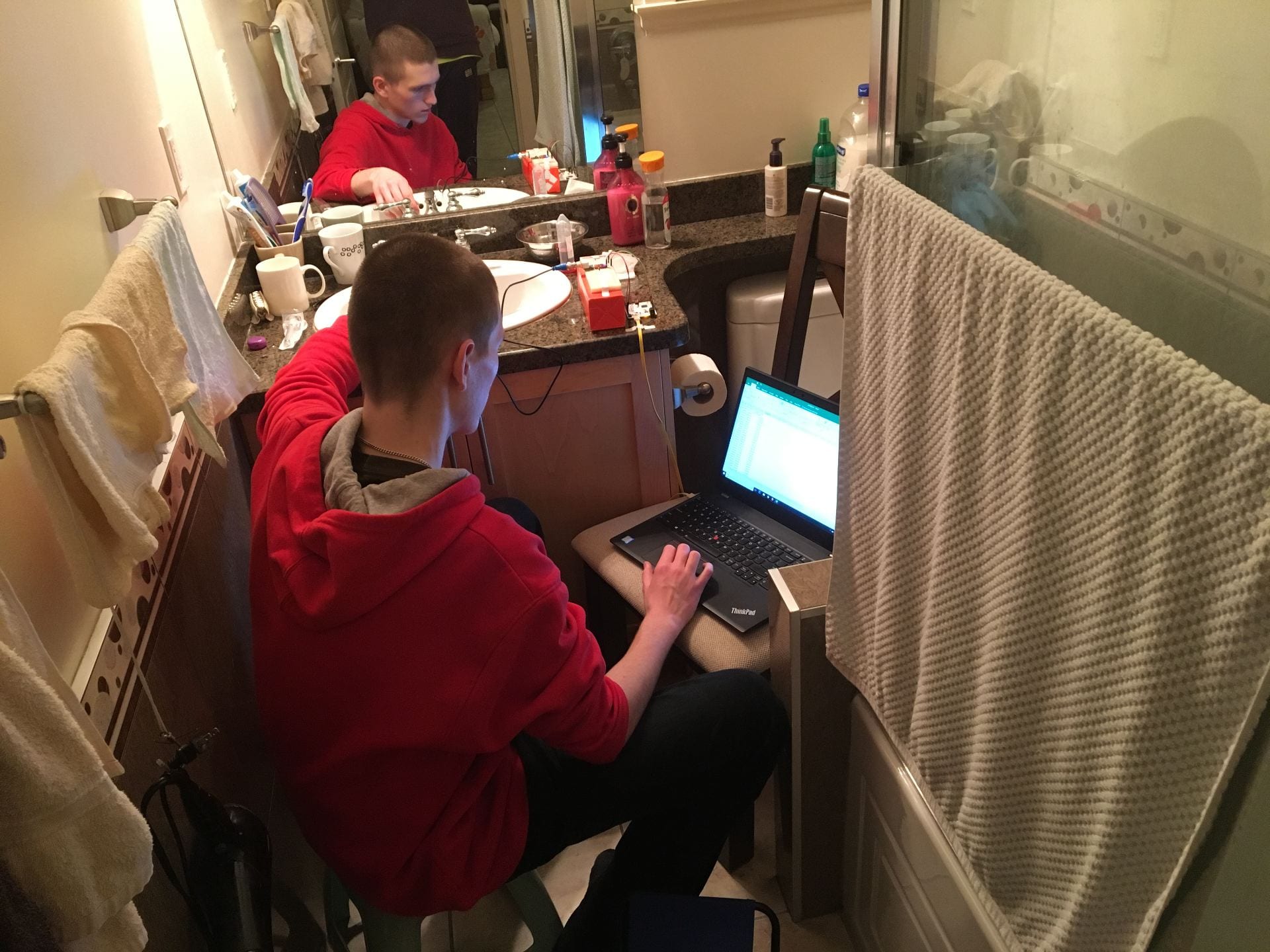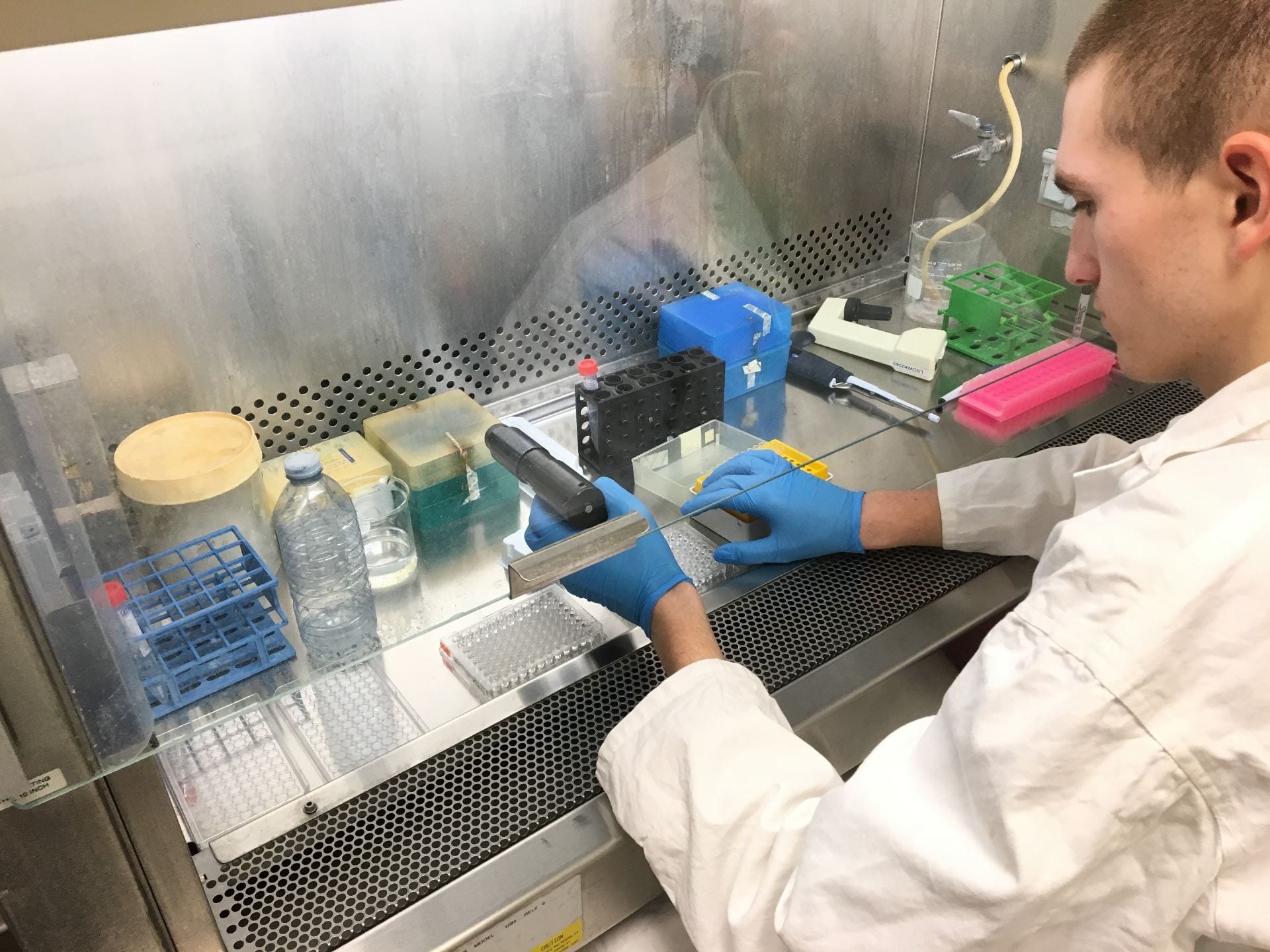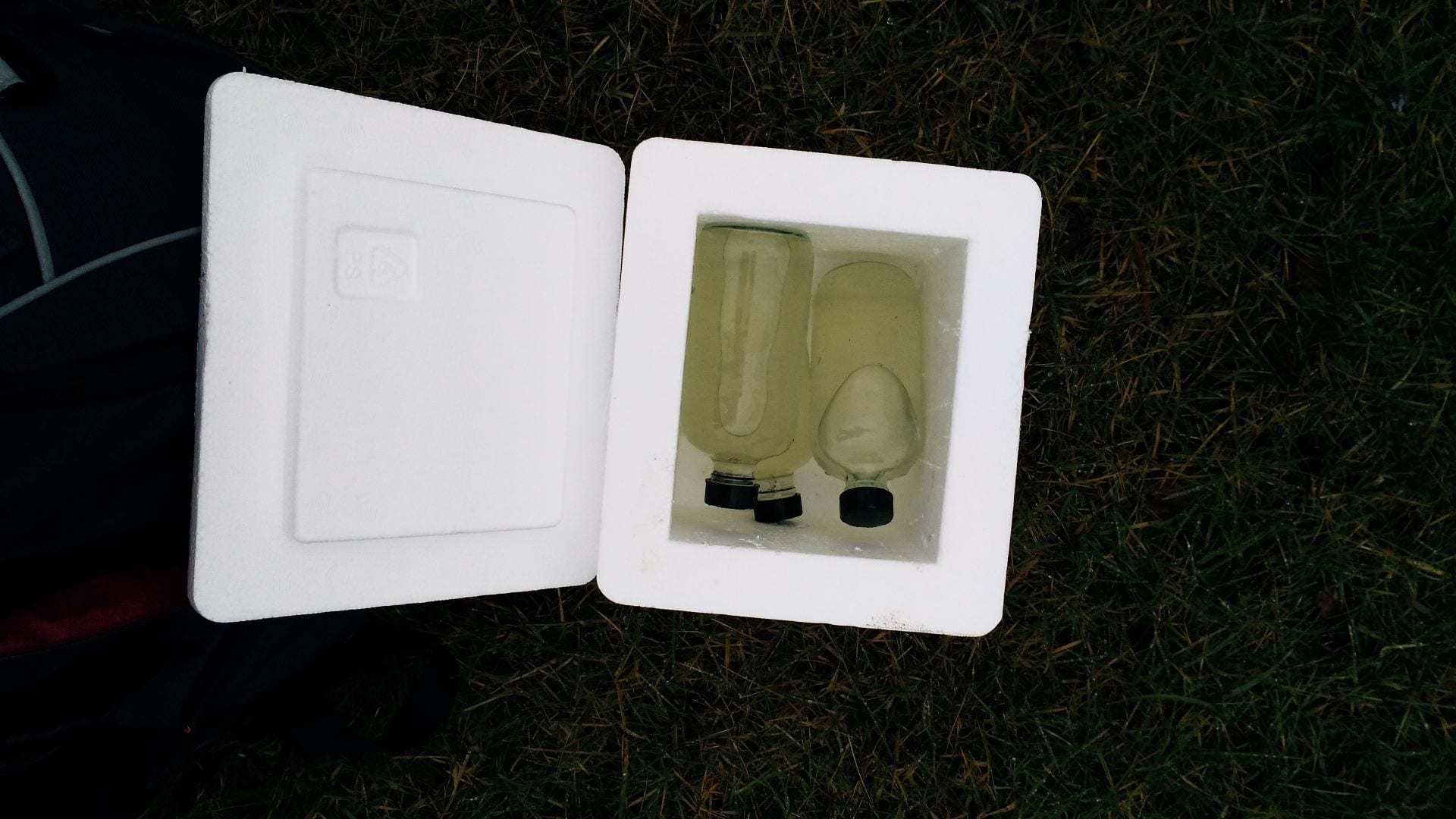In 2017, an iHub student named Mike embarked on a journey to fight tooth decay: The world he found himself in was riddled in cavities. Very few people are able to live even into their teens without facing at least one, and most need multiple fillings.
He and his partner started in humble beginnings, trying first to model the process of tooth decay on the kitchen counter.
Here’s Mike’s attempt to use pH strips to measure the acid produced by bacteria after putting sugar in the mouth. This acid production is what dissolves teeth and causes cavities:
pH strips just didn’t cut it, so they moved into the washroom. There they made a make-shift incubator, and used an electronic pH meter run by recycled code from a CNC mill.
After getting a professor involved, they moved into a proper BioSafety Level 2 laboratory at the University of British Columbia. There they tried to employ the use of bacteriophages (viruses that only attack bacteria) to kill off cavity-causing bacteria.
The difficulty was in acquiring the right bacteriophages to attack only cavity-causing bacteria. The proteins in the virus and bacteria need to match up so that the virus can insert it’s matter through the cell wall. After looking over other scientists’ work, Mike realised the best place to look is sewage. Sewage has a lot of bacteria and, as a result, a lot of bacteriophages. It’s a system that collects samples from a very wide diversity of people and mixes them together, increasing the odds the specific virus can be found.
After a long and arduous process, they were able to isolate a lytic (lethal for the bacteria) bacteriophage that targets S. mutans (the primary bacteria behind cavities). After applying it to a simulated mouth environment, it spread throughout the mouth killing off all the S. mutans colonies. The acid production stopped, total bacteria growth stunted, and plaque formation was almost non-existent.
Mike: 1 Tooth decay: 0
“I’m on my way to fight tooth decay!” he would chant as a war cry when leaving for the lab.
1,000,000,000 smallest effective doses of the final isolated virus are in this vial.









